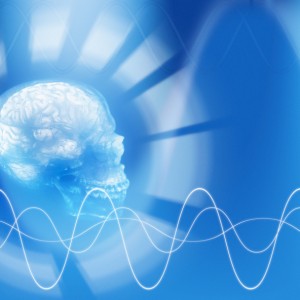Brain Waves
Brain waves are patterns of electrical activity occurring in the brain. They are crucial to all aspects of brain functioning: thoughts, emotions, and behaviors. Because brain activity can be influenced and altered through neurofeedback, desirable brain activity can be increased in those who are experiencing symptoms of certain mental health conditions.
Understanding Brain Waves
The human brain is made up of brain cells called neurons, which communicate with each other through electrical brain waves. The pattern of brain waves changes depending on one’s level of consciousness and cognitive processing. For example, when one feels fatigued or dreamy, slower brainwaves are likely dominant at that time.
Brain activity is generally characterized by a combination of brain waves. Depending on what one is doing at the time, a particular brain wave will be dominant over the others. This balance is important: When one’s brainwaves are not balanced properly, that individual may experience both emotional and neuro-physical health concerns.
Brain waves were discovered by German neurologist Hans Berger in the mid-1920s. Though Berger’s path to this discovery began because he wanted to record what he thought was psychic energy in the brain, he eventually narrowed his focus and successfully made the first recording of electrical waves in the brain: an electroencephalogram, or EEG. Since his discovery, EEGs have been used to provide useful information about one’s mental state and functioning, as they can lead to the diagnosis of epilepsy, sleep conditions, Alzheimer’s, and other issues related to brain functioning.There are five different types of brain waves, ranging from low to high frequency:
- Delta brain waves are the slowest brain waves. They are generated in deep meditation and dreamless sleep. Healing and regeneration occur when the brain is in this state.
- Theta waves also occur in sleep and during relaxation. They are indicative of an inner focus, and dreams and vivid imagery occur in this state.
- Alpha waves occur during quiet, thoughtful times. Alpha waves indicate that the brain is in a resting state.
- Beta waves are the most common pattern in the normal waking state. They occur when one is alert and focused on problem solving.
- Gamma brain waves are the fastest and are associated with higher levels of consciousness.
Brain Waves and Sleep
The brain is very active during sleep, and each stage of sleep is characterized by the brain waves that accompany it.
- Stage 1: In this stage, alpha waves are replaced by theta waves as one transitions from relaxation to sleep. Sleep is light and easily disturbed.
- Stage 2: During this stage of sleep, brain waves become slower as alpha activity stops completely and theta waves predominate.
- Stages 3 and 4: These stages are very similar in that both are forms of deep sleep. Brain activity slows down as delta waves occur. These are the stages during which sleepwalking and nightmares occur.
- Stage 5 (REM): During the rapid eye movement (REM) stage, the muscles become temporarily paralyzed, and the eyes move quickly. Dreaming also occurs during this stage. The pattern of brain waves is similar to that in stages 1 and 2, although the sleeper is in a deeper state of sleep.
Brain Waves and Mental Health
Brain waves are relevant to mental health, as abnormalities in brain functioning can influence the development of certain conditions. For example, when certain areas of the brain are over-aroused, an individual may experience anxiety, nightmares or other sleep problems, impulsivity, and aggression. Too little arousal in the brain, on the other hand, has been correlated with depression, chronic pain, and insomnia. If brain rhythms are unstable, an individual may experience obsessive compulsions, develop epilepsy, or have panic attacks.
Neuroscientists have recently discovered a link between an overabundance of gamma waves in the brain and schizophrenia. Gamma waves cause hyperactivity in areas of the brain, and when this hyperactivity is abnormally high, as it often is in those with schizophrenia, delusions and hallucinations can result. Poor sleep, which also results from an excess of hyperactive brain waves, has also been recently shown to be a contributing factor to symptoms of schizophrenia: Those who have trouble sleeping due to overabundant gamma waves in the brain may experience a “triggering” of schizophrenia symptoms.
Research on brain waves has also shown that certain individuals may be biologically more likely to experience depression. These individuals demonstrate an abundance of alpha wave activity in the left frontal areas of their brain. Another condition that is characterized by an excess of lower frequency brain waves is attention deficit hyperactivity. However, both of these conditions, along with others, have shown improvement when treated with neurofeedback therapy.
Neurofeedback is a therapeutic technique that is used to monitor and change brain wave patterns in an attempt to modify behaviors and improve mental health. In this type of therapy, individuals are taught to alter the flow of brain waves. A therapist uses EEG readings to determine the level of brain waves and assess the predominance of abnormal activity and then rewards the desired brain wave activity to encourage its production. In an individual who has depression, for example, the therapist will use sound and visual effects to reward beta waves in order to help relieve the symptoms of depression.
References:
- Ericson, J. (2014, March 26). REM, dreams, and brain waves explained: What happens in the brain when we sleep? Medical Daily. Retrieved from http://www.medicaldaily.com/rem-dreams-and-brain-waves-explained-what-happens-brain-when-we-sleep-272580.
- Guyol, G. (n.d.). Ending Mood Disorders Without Drugs. Retrieved from http://www.gmhcn.org/files/Wellness/EndingMoodDisordersWithoutDrugs.html.
- Laskow, S. (2014, November 23). The role of the supernatural in the discovery of EEGs. The Atlantic. Retrieved from http://www.theatlantic.com/health/archive/2014/11/the-role-of-the-supernatural-in-the-discovery-of-eegs/382838.
- Mayo Clinic Staff. (2014). EEG (electroencephalogram). org. Retrieved from http://www.mayoclinic.org/tests-procedures/eeg/basics/why-its-done/prc-20014093.
- Myers, J.E., & Young, J.S. (2012). Brain wave biofeedback: Benefits of integrating neurofeedback in counseling. Journal of Counseling & Development, Vol 90(1), 20-28.
- Trafton, A. (2013, October 16). Schizophrenia linked to abnormal brain waves. Retrieved from http://newsoffice.mit.edu/2013/schizophrenia-linked-to-abnormal-brain-waves-1016.
- What are brainwaves? (n.d.). Brainworks. Retrieved from http://www.brainworksneurotherapy.com/what-are-brainwaves.
Last Updated: 01-8-2016
